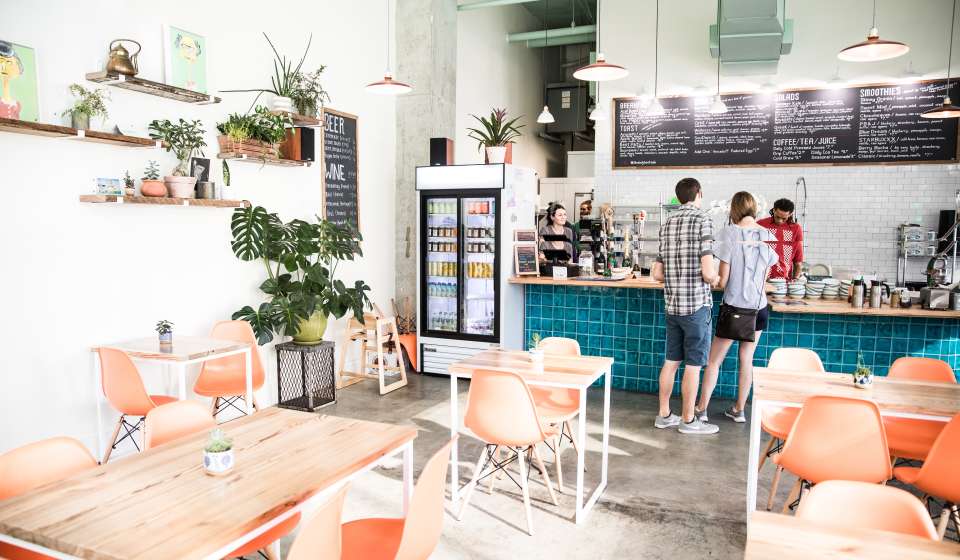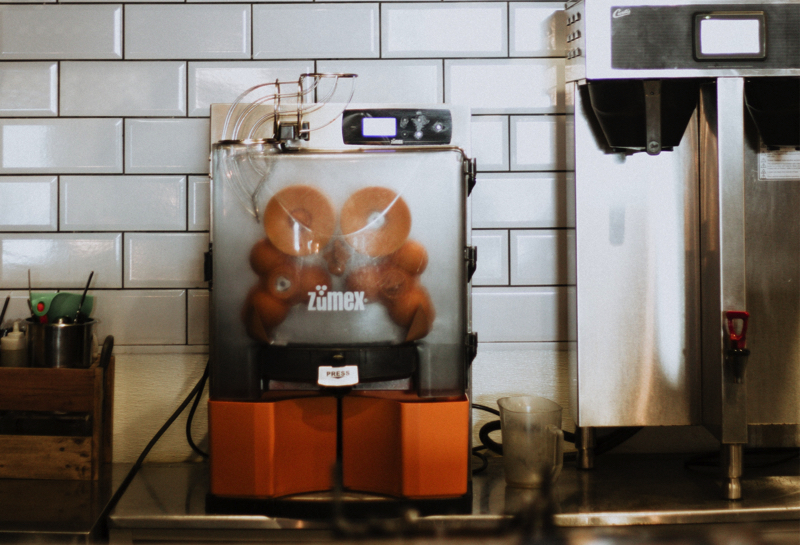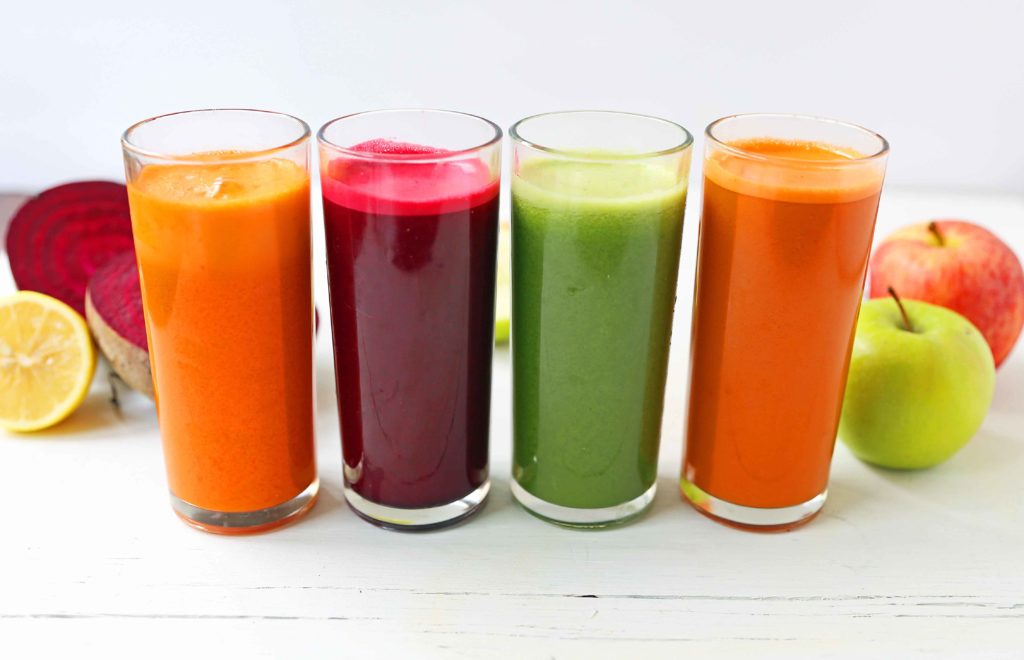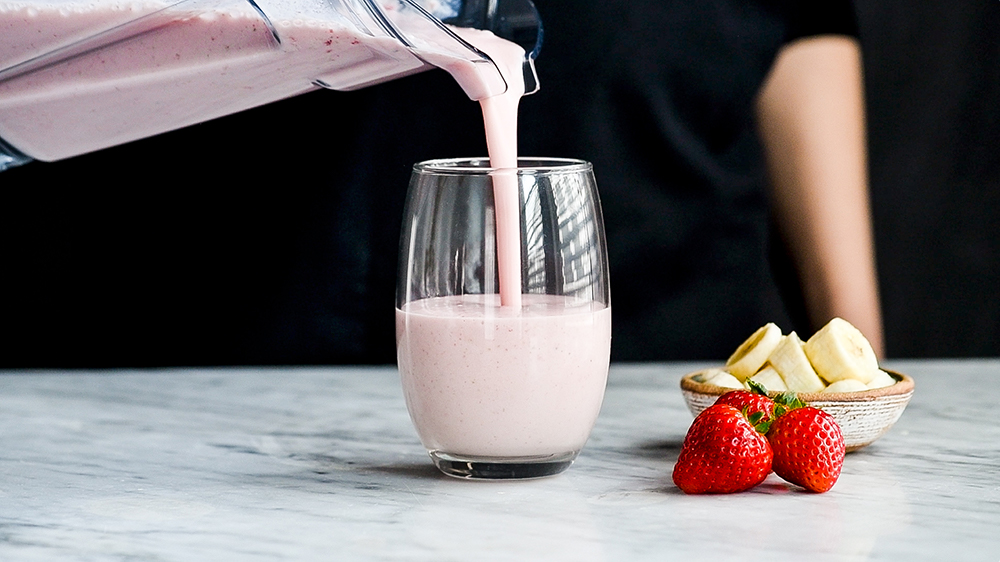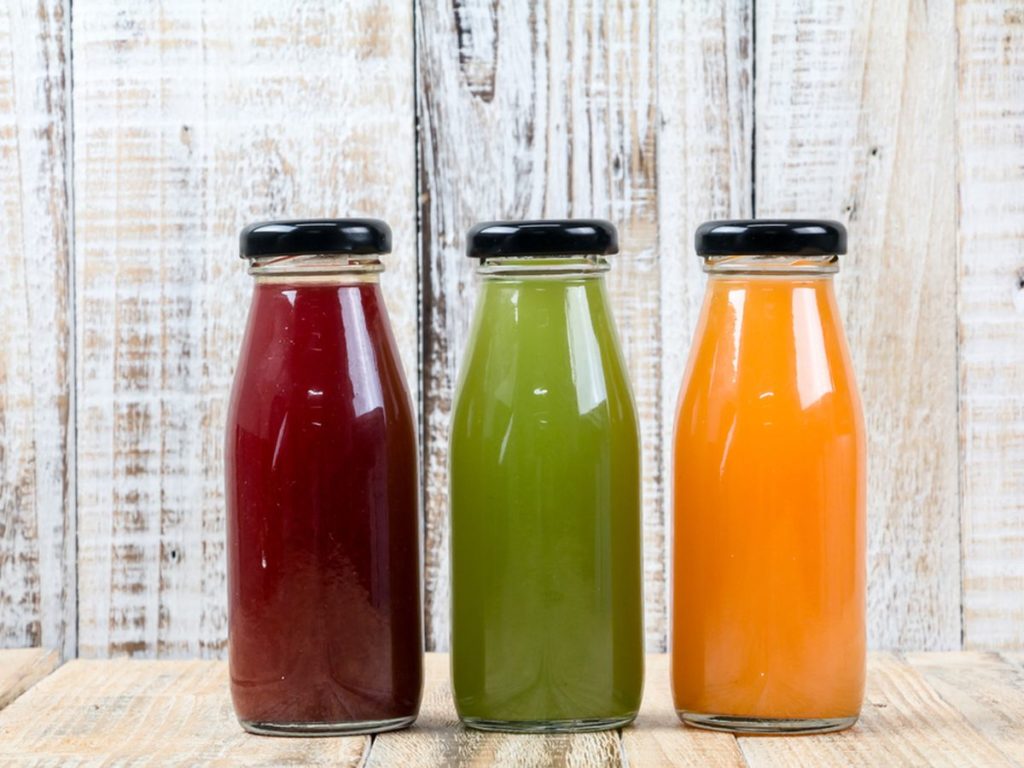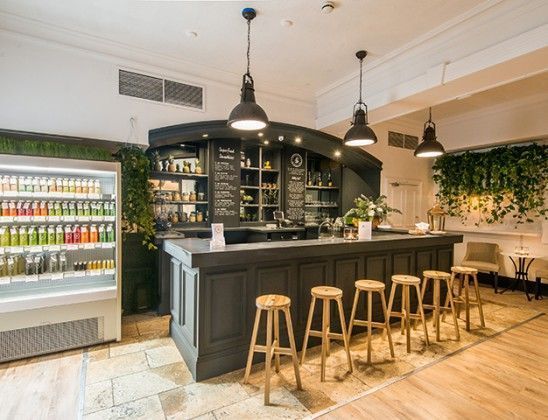
How to Open a Juice Bar in 12 Steps
Opening a juice bar is an extremely rewarding experience that can be very lucrative and improve the health around your community. Your juice bar will need creative marketing, a good location, and great equipment. Startup costs can be as low as $15k or as high as $350k, depending on your area. However, you’ll bring in $200k – $750k in annual revenue once your juice bar is set up and running. We’ve helped hundreds of juice bars craft their business plans, get the right equipment for sustainable operations, and expand into additional offerings. Let’s jump right in and discover how to open your juice bar.
Here are the 12 most important steps to open your juice bar:
1. Understand the Secrets to Successful Juice Bars
Most of our readers visit juice bars or even own several of them. However, some of you do not have a juice bar in your area and are ready to bring the healthy vibes to your hometown. Let’s understand what a juice bar does and what makes them so popular.
Juice bars are aimed at health-conscious individuals who want to add fruits and vegetables to their diets. Many people replace traditional foods with juices while doing 30 days cleanses. People participating in juice cleanses requires a constant source of fresh juice, whether it comes from their local juice bar or personal juicer at home. Juice bars serve freshly squeezed juices as well as healthy smoothies and other delectable treats. This includes protein shakes, wheatgrass shots, chia pudding, coffee, and greens.
The best way to learn about juice bars is to visit the nearest juice bar to your home. Spend some time in the environment and determine what customers frequently order. Do they spend time at the juice bar or quickly leave after receiving their order? Which items are the most popular? Bring your laptop and spend the afternoon working and observing, You’ll discover that offering free internet access is a great way to keep happy customers in your bar; all the while reordering more from your menu. You should also note how busy they are in the mornings vs. lunch time vs. after work. Other things to note are how new products or specials are marketed, which foods / juices are offered, and how many employees work throughout the day.
2. Project Startup Cash Flows
Projecting finances for a new business sounds daunting at first but is quite simple to do. Your financial projections may start out as rough estimates but will improve as you make key decisions and complete initial purchases. Stable cash flows and sound financial performance will likely occur once you gain a devoted customer base. However, it’s important to understand the potential upside and expected costs. This will determine how much you should invest and where to get the funding.
Before we begin, starting a business requires dedication and effort. You may not see a profit for several months but it’s important to keep impressing your customers and building a satisfied audience. Eventually your dedication and perseverance will reward you with a profitable business,
The first step to projecting startup costs is to predict fixed initial costs. These include business licenses, permits, remodeling or construction costs, juice bar equipment, and staff hiring / initial training costs. Fortunately, these costs are minimal once you start operating your juice bar. You will also encounter recurring costs on a daily / monthly basis. These costs include internet, telephone, fresh produce, and employment costs. Equipment can break down and require repairs, but a lot of these costs disappear if you buy the right equipment and properly care for it.
You will also have to project revenues. Revenues can be projected by talking to other juice bar owners or creating a rough forecast tailored to your area. You could err on the side of caution by creating multiple scenarios – downside, base, and upside scenarios. This will help you calculate your juice bars potential and determine how much capital you can put in. There are multiple ways to improve cash flows, such as getting a more efficient juicer or reducing wasted produce.
Once you have initial revenue and cost projections then you can calculate your cash flows. Find the difference between monthly revenues and costs to calculate your juice bars profit. You can set the profit aside forr a rainy day fund or invest it back into your business
3. Purchase Appliances and Equipment
One of the most exciting parts about opening a juice bar is buying the equipment and testing everything out. Equipment for a juice bar is specialized for commercial use and may have multiple certifications, such as ETL or NSF certifications. Check with your local business or health department to see which types of certifications are required for your area.
Once you know the certification requirements then you can begin shopping for new equipment. It is important to buy high-quality commercial equipment so it will last and not break down. Cheap equipment can break down and cause costly interruptions or business closures during your busiest times. You should also think about your juice bars future potential and get robust equipment that you can grow into. Some restaurants have to repurchase appliances as they grow while savvy owners buy larger appliances to begin with.
Here are the most important appliances and equipment that your juice bar will need:
- Juicer ($500 – $2,500)
- Blender ($150 – $500)
- Refrigerator ($1,500 – $4,000)
- Freezer ($1,500 – $4,000)
- Ice machine ($2,000 – $5,000)
- Dishwasher ($400 – $1,000)
- Countertop Work Area ($100 – $500)
- Storage Shelves ($20 – $400)
- Scales ($10 – $30)
- Cutting Boards ($15 – $50)
- Storage Containers ($20 – $100)
- Cutlery ($20 – $100)
- Knives ($150 – $500)
- Misc Equipment (Grill, coffee machine, etc.)
Important Equipment and Appliances
Juicer
Cost: $500 – $2500
Choosing the right juicer for your juice bar is important since it will be one of the most-used appliances. The first step is to determine the right juicer for you:
Centrifugal Juicer
Centrifugal juicers can spin up to several thousand RPMs and are very fast. These are common for popular juice bars that need to make several gallons of juice every day. Centrifugal juicers work well with fruits and vegetables but not well with leafy greens. You can combine leafy greens with your produce but these juicers will produce a lot of waste if juicing greens alone. Some of the most popular centrifugal juicers are the CEADO ES-500 / ES-700, Nutrifaster N450, and Ruby 2000, depending on your throughput requirements.
Masticating Juicer
Masticating juicers spin at slower speeds than centrifugal juicers but the yield is much higher. You will have much less waste so you will save on your produce costs. Another benefit of masticating juicers is that they spin at slower speeds (~<100 rpm). The nutrients and enzymes in your juices will stay intact. This helps your juices stay fresh in case you want to juice a lot in the mornings and sell them throughout the day. Given the slow speeds of masticating juicers, they handle leafy greens much better than centrifugal juicers. Some of the most popular commercial masticating juicers are the Kuvings CS700 and Ceado CP150. The Kuvings CS700 is a popular choice for juice bars serving health-conscious crowds since it uses a stainless steel juice bowl and is NSF certified.
Triturating Juicer
Triturating juicers have dual gears so they use two gears to crush and press juice out of produce. The juice yield from triturating juicers is the highest but the speed is the slowest. This juicer is ideal if you want the highest quality juice and you do not have to serve huge crowds. Triturating juicers spin at slow speeds so your juices will last for 2-3 days. One of the most popular commercial triturating juicers is the Tribest GS-P502.
Specialty Juicer
Depending on your menu, you may want to get additional juicers for your juice bar. Juice bars offering wheatgrass shots should get a wheatgrass juicer, such as the Super Juicer. This juicer works much better on wheatgrass than standard commercial juicers, although it is limited to just wheatgrass. If you’re offering sugarcane juice, then you will need a dedicated sugarcane juicer. Juicers such as the SC-3 NSF certified juicer work perfectly for this. Many juice bars bottle juices in advance to keep up with the demand during the day. If you want to bottle 200 bottles per hour then you could benefit from a Juiced Rite M100 Commercial Juicer.
Blender
Cost: ~$500
Blenders spin at faster speeds than juicers and are perfect for smoothies and healthy shakes. You will want a blender with a powerful motor and a noise guard if you want to control noise levels in your juice bar. Many blenders are easy to clean and you can run soap through them to simplify the cleaning process. You can also invest in a vacuum blender (such as the Kuvings SV500 (not NSF certified)) to remove air from the blender before blending. This prevents oxidation and makes your smoothies last longer without turning brown / losing nutrients.
Refrigeration
Cost: $1,500 – $4,000
The refrigerator is an essential piece of equipment since you will display your juices and store raw produce in it. There are a few things to consider before buying a refrigerator. If you are selling bottled juices then you will need a merchandiser that makes your products easy to grab. Several juice bars have open kitchens that benefit from a glass refrigerator. This enables customers to see your fresh produce before ordering. Finally, juice bars with enclosed kitchens typically use stainless steel fridges. These retain cold air better than glass fridges, reducing your electricity costs. Popular refrigerators include the Turbo Air TSR-49SD and Turbo Air merchandiser.
Freezer
Cost: $1,000 – $4,000
One critical choice to make before choosing a freezer is to determine how it will be used. If you store your frozen produce in front of customers then you will want an undercounter freezer or chefs base. Produce frozen in the back can be stored in a standard freezer with 1-3 doors. The size of your freezer should be driven by how much produce you will store in it.
Ice Machine
Cost: $2,000 – $5,000
Ice machines come in many different shapes and sizes. Two important variables of ice machines is how much ice they produce and what shape the ice is. You can size an ice machines by estimating how much ice you will go through in a day or how many people you expect to serve ice to. You will use ice in smoothies, ice coffees, and waters, but will not juice with it. The second choice is what shape your ice should be. You will use standard ice cubes with water and nuggets with blended beverages.
Dishwasher
Cost: $400 – $4,000
Dishwashers are optional since you can use a glass washer or sink to clean your dishes. Dishwashers come in many shapes and sizes and range from a simple bar sink to a commercial undercounter dishwasher.
Knives
Cost: $150 – $500
You will use knives throughout the day to cut produce and prepare it for customers. You will need a wide range of knives to handle everything from peeling skins off of fruits to cutting watermelons in half. Most juice bars start with knife sets although some juice bars buy knives one by one.
Misc Equipment (Grill, coffee machine, etc.)
Your unique menu will drive the different types of equipment that you will need. If you offer food then you will need a gas range or griddle. If you offer coffee then you will need a coffee machine. Many juice bars also sell orange juice which requires a citrus juicer. Please contact us if you have questions about what you need.
4. Craft New Juice and Smoothie Recipes
One of the best ways to get a devoted following is to provide delicious juices and smoothies that keep customers returning. There are several popular recipes but you can also customize them to provide a unique experience. The best way to do this is to try different combinations at home and modify them to perfection. Many juice bar owners use a personal masticating or twin gear juicer for this reason. Your friends, family, and colleagues will happily taste your new recipes and provide useful feedback. Study your local trends to see if there are popular types of juices (you already did this in step 1) and cater your menu to these trends. You can also provide some staple recipes such as celery juice, green blends, wheatgrass shots, or berry-based smoothies. The recipes can be modified by adding protein, echinacea, or other types of supplements / vitamins.
You can expand your juice bar to offer coffee, sandwiches, and other food options. Make sure you have the right certifications along with equipment (stoves, coffee machines, etc.) to quickly expand. A larger menu will increase the number of potential customers and keep them in your juice bar longer.
5. Choose Location
Picking a location for your juice bar is one of the most important choices you will make. It can seem daunting at first but there are a few tips to simplify the search. First of all, make sure your location is close to your home to make your daily commute reasonable. You will be driving there every day, and may be exhausted when it’s time to go home. The last thing you want to do is to burn out during the commute.
Once you determine how far away from your home you can work then you can look at other factors.
- High pedestrian traffic: A lot of juice purchases can be impulse purchases so your juice bar should be in front of as many customers as possible. Choose areas with heavy foot or vehicle traffic. You can look for main streets, busy sidewalks, popular malls, areas near train stations, etc.
- Health-conscious areas: Health-conscious individuals are likely to juice or be familiar with juicing. Placing your juice bar in a health-conscious neighborhood will maximize chances of success. An easy way to spot a health-conscious neighborhood is to look for successful gyms, Pilates studies, CrossFit gyms, vegan restaurants, etc.
- Easy access: Your juice bar needs to be as accessible as possible. If everyone in your neighborhood drives then your juice bar should have plentiful parking. If you live in a walking neighborhood then make sure you are on a busy sidewalk or near a bustling train station.
- Competition: Make sure you are far away from the nearest juice bar to avoid constant competition. The existing juice bar already has dedicated customers so it will be difficult to convert them to your juice bar. Opening your juice bar in a new area will give you access to customers with unmet juicing needs and maximize your chances of success.
- Budget: Busy areas charge premium rental rates so make sure that you can afford the rent. A busier area will give you access to more customers (and more revenue) but the rents will also be higher. Monthly tents should not exceed ~6% of gross sales.
- Mobile business: Food trucks are becoming extremely successful with many trucks serving health-conscious individuals. Many of our customers have outfitted food trucks with juicers to serve customers at any location. An advantage of operating a food truck is that you can serve popular events at busy venues. You can operate at concerts, volleyball tournaments, festivities, parades, beaches, or wherever the customers go.
- Kiosks: Many juice bars are opening in kiosks at busy shopping malls. The kiosks are rented from the mall management companies and have lower rents than standalone shops. You can also open a kiosk at an airport or train station. Kiosks can cost up to a few thousand dollars during the busiest months but typically cost less.
Overall, you should spend time choosing the right location. Don’t wait too long or else a juice bar may pop up in a prime location but don’t choose a location without careful thought.
6. Design and Remodel Store
After you choose a prime location and get the keys then the next step is to remodel and setup your juice bar. The layout is the first thing that customers will see so it is important to make the area inviting while encouraging customers to return.
There are a few important things to account for since you will be serving beverages and possibly food.
- Food storage requirements
- Proper methods for waste disposal
- Appliance standards and certifications – some areas require NSF-certified products while others do not require any certifications
- Ventilation, electrical, and plumbing requirements
- Sanitation standards
Once you meet all the standards then you can design the layout. Juice bars typically have seats near the entrance and the counter in the rear. Lines for your counter should be off to the side so incoming customers do not feel cramped. Your menu should be on the right wall so guests can choose their preferred juices while in line. The left side of the store should have seats for all of your customers.
After your customers order then you should keep them comfortable so they stay in your juice bar. Offer food options, wifi, games, books, and relaxing music. Customers staying in your juice bar will order more and likely return in the future. You should have plenty of electrical outlets and offer comfortable seating / spacious tables.
7. Create Brand Awareness and Reach
Your juice bar will need solid brand awareness to keep clients returning time after time. You will need a catchy name, recognizable logo, and marketing plan to build up your customer base. You can do this offline (advertisements, personal outreach, etc.) as well as online (search engines, Yelp, and Facebook). There are an infinite number of ways to create brand awareness but we will just touch on the basics. You should consult a marketing professional to come up with a plan specific to your juice bar.
8. Build a Juice Bar Branding Strategy
To successfully open a juice bar, you will need a branding strategy and marketing plan. You’ll want to create a logo, color scheme, and plan for attracting customers to your business. For most juice bars, an effective marketing strategy involves a combination of digital and offline tactics. However, the basics include designing a logo and creating a website.
Logo
One of the best steps of opening a juice bar is seeing your logo printed in front of you. Take care designing a logo since this will represent all of your hard work and will be recognizable by customers in the area. Your logo should be unique, appealing, and not burdened with too much text. Try to make a simple logo that will look good on signs, menus, glasses, napkins, etc.
You can hire a graphic designer to create the logo, design the menus, etc. or you can use several free tools online.
Create Website
Your website is a critical part of your business since many customers will find you online. They will visit your website to see pictures and flip through your menu. Having a slow or unappealing website may turn them away or lead them to another juice bar. Creating a website is easy and can be very cheap to operate. All you need is a domain name and website hosting. Once you get these then you can use a website creation service and have your website up and running in no time.
9. Hire & Train Employees
A few weeks before your planned opening, you can start hiring your new employees. Customers will always interact with your employees so ensure that your employees are friendly, uphold your juice bar ethos, and have a strong work ethic.
You can search for candidates by posting help wanted listings online or on local job boards. Determine which positions you want to fill and write compelling descriptions of what you’re looking for. Typical juice bars have managers, supervisors, front desk staff, etc. and you should hire cooks if you offer food. Interview your candidates carefully since they will represent your juice bar. You should look at previous work experience, enthusiasm, as well as a strong work ethic.
Once your staff is hired then you should train them to hit the ground running on day 1. Train them to operate your equipment and show them how to effectively serve customers. Explain the layout of the juice bar and describe the daily operations. Make sure they know who to contact if they have an issue and provide an escalation plan if they are unable to get help right away. Have them practice making your recipes and provide samples so they can describe them to customers. Afterwards, get to know them since you will be working with them and they will be critical to a successful juice bar.
10. Open Your Business
The first day of operations is an exciting day that can be shared with your entire community. You have put in a lot of hard work into your juice bar and are ready to share your new venture with a receptive audience. Hold a grand opening an make sure it is well attended. Ask your friends and family to attend and advertise it online and on social media. A busy first day will build up a strong customer base from the beginning and provide social awareness through photos and stories. You can also reach out to your Chamber of Commerce to get tips on opening a juice bar. They have helped several businesses open and can provide tips and tricks for you. They may also help with connections and best practices for throwing a successful grand opening.
11. Find New Customers
After your grand opening, you will want to expand your customer base and give new customers a reason to visit. The first step is to advertise your business and ensure that you have a strong online reputation. Here are tips for a few popular platforms:
Help Customers Find Juice Bar on Google
You should register your business on Google to ensure that new customers can find you. Use Google My Business to create your business profile and add your website, phone number, hours and contact information. Once you register, your juice bar will show up whenever somebody searches for juice bars around them. Your juice bar will also show up on Google Maps for customers who want a juice while on the road.
Appear on Yelp
Yelp is one of the most popular platforms for finding a juice bar. You can register by going to Yelp for Business. Once you register then you can respond to reviews, change your hours, and add helpful information. You can also see customer feedback and change your business based on customer preferences. This will give you insights on how to improve your business.
Additional Tips to Find Customers
There are numerous platforms that your juice bar can take advantage of. You can also create a Facebook Business page, Instragram account, or Twitter page. See which platforms local businesses are using and create similar pages for your website. Make sure you are engaged with your customers and respond to their feedback whenever possible.
12. Grow your Juice Bar
Once you have sufficient operating experience then you can consider expanding. There are multiple ways to grow your juice business without opening another shop. Here are a handful of tips:
- Offer juice cleanses: Juice cleanses are extremely popular during the summer months or right after everyone makes New Year’s resolutions. You can improve sales by recommending cleanses consisting of multiple juices or selling pre-made juice kits that your customers can enjoy from home. You can sell the pre-made kits from merchandisers at the front of your restaurant. This will make it easy for customers to improve their health.
- Incorporate trends into menu: Juicing trends change regularly. Ginger shots used to be really popular a few years ago but have been replaced with celery juices. Celery juices are easy to make and extremely popular given the health benefits. Smoothies and protein shakes are also really popular during the hot summer months. Keep an eye on changing trends and update your menu to offer the latest trends in juicing.
- Offer loyalty programs: Keep customers returning by offering free juices for loyal customers. Create a digital loyalty program or use something as simple as a punch card to track juices purchases. Once a customer buys ten juices then show your appreciation by offering a free juice.
Summary
Opening a juice bar can be an extremely rewarding and profitable experience. The demand for juice bars is extremely high, with an annual market size of $2.5 billion, and the market is growing every year. Right now is the perfect time to open a juice bar so reach out to us if you have any questions. We’ve helped hundreds of juice bars open their doors and will help you outfit your juice bar and start serving customers as quickly as possible.

